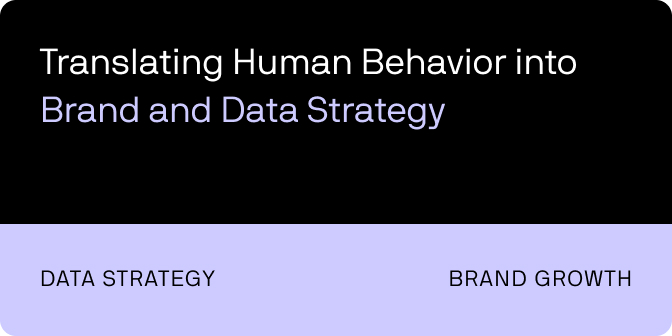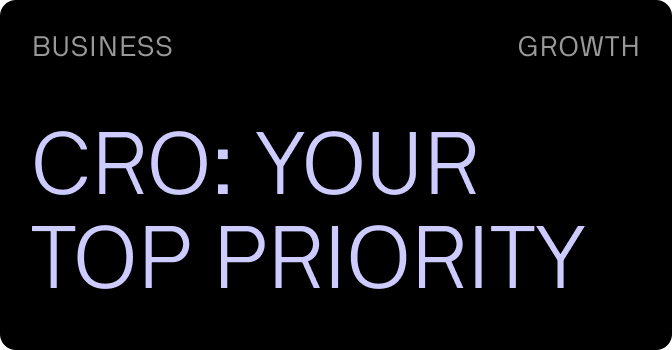How Can You Boost Conversions?
Improving conversions isn’t just about fixing usability issues—it’s about aligning your messaging and design with what truly drives your users. But uncovering user motivations is often easier said than done.
Fortunately, there are research techniques designed to do just that.
One such approach is Empathic Design—an often overlooked but powerful qualitative research method. It helps uncover brand perceptions, user motivations, and even the subconscious factors influencing consumer decisions.
What is Empathic Design?
Empathic design, as defined by Wikipedia, is “a user-centered design approach that pays attention to the user’s feelings toward a product.”
At its core, empathic design is a subset of user-centered design, which focuses on deeply understanding user needs, desires, and limitations throughout the entire design process.
However, in practice, empathic design goes beyond traditional user research. It seeks to identify hidden customer needs—even those users may not consciously recognize. By tapping into these latent motivations, brands can craft messaging and experiences that resonate on a deeper level, ultimately driving more conversions.
Our approach to Empathic Design differs slightly from the standard definition. Instead of viewing it solely as a philosophy, we apply it as a structured research process. By combining qualitative surveys with direct observation, we create a Limbic Map—a powerful tool for decoding consumer psychology and shaping brand strategy.

The Limbic Map: Understanding Consumer Emotions and Behavior
You may recognize this model as a key UX research strategy, popularized by André Morys from KonversionKraft and originally based on research by Hans-Georg Häusel. Developed by the German firm Nymphenburg Group, this approach maps emotions into three primary categories:
- Stimulant
- Dominance
- Balance
Each category represents a different set of emotional triggers that influence decision-making and consumer behavior.
- Stimulant encompasses playful and curiosity-driven emotions, such as creativity, fun, pleasure, and humor. According to Sirja Sulakatko, these emotions are essential for growth and exploration, both in childhood and adulthood. They drive discovery and innovation.
- Dominance is associated with order, discipline, and the pursuit of power, status, and achievement. Emotions such as pride, ambition, and logic fall under this category, often influencing decision-making based on control and competitiveness.
- Balance relates to security and stability, characterized by emotions like trust, friendship, loyalty, and a sense of home. These values foster emotional connection and brand trust.
Why These Values?
The Nymphenburg Group explains that this emotional mapping was conducted by qualified psychologists, with relationships and distributions based on empirical data. This structured approach helps brands understand consumer motivations on a deeper level.
The Seven Limbic® Types
Based on where consumers identify themselves on the map, they can be categorized into seven Limbic® types, each with distinct behavioral traits:
- Harmonizers – Family-oriented, emotionally driven, and risk-averse. They prefer brands that evoke trust and positive emotions.
- Traditionalists – Cautious and skeptical of change, spontaneity, and risk. They favor brands that emphasize safety and reliability.
- Bon Vivants – Pleasure-seekers who love shopping, experiences, and fashion. They often make impulsive purchases based on enjoyment.
- Disciplined – Pragmatic consumers who appreciate straightforward, high-quality products with a strong value-for-money proposition.
- Hedonists – Ambitious and creative individuals who enjoy products that enhance their appearance and personality. They gravitate toward premium and attention-grabbing brands.
- Performers – Highly driven and rational decision-makers who seek exclusivity and prestige. They avoid low-cost brands in favor of luxury and high-quality options.
- Adventurers – Nonconformists who thrive on spontaneity, risk, and leadership. They prefer innovative, trendy, and high-performance brands.
By understanding these Limbic® types, brands can craft messaging and product experiences that align with deep-seated emotional and psychological drivers, ultimately enhancing user engagement and conversions.
How the Technique Actually Works
The goal of Empathic Design is to uncover the implicit reasons why people use your product. Understanding these deep-seated emotions and motivations allows you to refine your design, messaging, and positioning to better resonate with your audience.
The Process
To apply this technique effectively, follow these steps:
- Identify Your Sample Group
- Gather a meaningful sample of past customers, preferably repeat buyers.
- Aim for a sample size of at least 100 to ensure reliable insights.
- Conduct the Limbic Mapping Exercise
- Provide participants with a Limbic Map® and ask them:
- “When shopping for [Product Name], pick the top 3 words that BEST describe what you associate with the product.”
- As responses accumulate, a heat map begins to emerge, revealing the dominant emotions and motivations driving your customers.
- Apply Findings to Branding & Positioning
- This technique can extend beyond product design to branding, advertising, and competitor positioning.
- Simply adjust the question:
- “Considering your experience with [Brand Name], what words do you MOST associate with [Brand Name]?”
- Tracking this over time helps measure brand perception shifts, especially after major changes like website redesigns, rebranding efforts, or new product launches.
- Expand to Product Development
- Empathic Design is not just for marketing—it plays a vital role in product innovation as well.
- As Wikipedia notes, users in empathic design are almost as involved in product development as designers and engineers, leading to breakthrough innovations.
- To maximize impact, your observation team should include anthropologists, ethnographers, and behavioral experts, alongside designers and engineers.
Formative vs. Summative Research
One of the most interesting aspects of Empathic Design is that it is formative, not summative:
- Formative research is exploratory, conducted at the start of a project to guide decision-making.
- Summative research is performed at the end, evaluating the success of a design, campaign, or feature.
For example:
- A/B testing and analytics are summative—they tell you what worked after implementation.
- Empathic Design and user testing are formative—they help shape decisions before launching.
By combining both, you create a data-driven feedback loop, using empathic insights to design with intent, and summative testing to validate results.

Empathic Design in Action: How It’s Used
According to the Schwartz Theory of Basic Values, values represent desirable goals that drive human action. When applied to product design and branding, this means that understanding the values your most loyal customers associate with your product helps you craft more compelling messaging and experiences.
For example, if individualism is the most frequently chosen value by your customers, it suggests they are using your product to pursue personal freedom and self-expression. Recognizing this, you can refine your copy, design, and positioning to emphasize those motivations—and then test whether clearer messaging attracts even more loyal customers.
Turning Insights into Action
Once you’ve gathered responses, the next step is to design variations based on the core motivations behind purchases. Let’s say you sell shoes, and customer responses cluster around three key values:
- Quality & Functionality
- Individuality & Rebellion
- Style & Fashion
You would then create and test different variations that appeal to each of these emotional drivers.
Case Study: André Morys & KonversionKraft
In research conducted at CXL Institute, André Morys found that customer responses clustered around three main values:
- Style
- Differentiation
- Quality

To validate these insights, they designed separate landing pages, each focused on one of these key motivators.
Step 1: Create variations that emphasize each motivation.
Step 2: Analyze goal metrics to determine which version performs best.

Executing Empathic Design for Maximum Impact
Knowing that your audience associates your product with a value like “power” doesn’t tell you exactly how to convey it—but it gives you a direction.
For example, power-driven consumers tend to seek status, prestige, and dominance. To translate this into design and messaging, you might:
- Use bold, high-contrast colors like dark reds and black.
- Feature strong, authoritative typography and commanding imagery.
- Craft copy that emphasizes social dominance, leadership, and exclusivity.
Then, you test these variations against other key values identified in customer responses.
Testing & Optimization: The Next Step
Empathic Design is a starting point—from there, it’s an iterative process of testing and refining.
According to Unbounce, summarizing Morys’ strategy, you can validate your insights in two key ways:
- Qualitative Testing:
- Conduct user testing by showing volunteers your landing page and asking which value from the Limbic Map® comes to mind first.
- Adjust the design and messaging until the responses align with your target value.
- Quantitative Testing:
- A/B test different designs with your target audience and analyze the results.
For best results, use both methods to ensure your messaging aligns with customer psychology while being data-backed and performance-driven.
Limitations of Empathic Design
Like any qualitative research method, Empathic Design has its limitations. While it helps identify brand associations, it does not necessarily determine effectiveness or usability.
For example, while customers may associate a product with “independence,” a design emphasizing “safety” might actually be more persuasive. Human decision-making is complex, and stated associations don’t always reflect subconscious behavior.
The Role of Testing in Empathic Design
Empathic Design provides a guiding direction, not a strict rule. The insights gained from Limbic Mapping® must be validated through quantitative testing, such as:
- A/B testing variations that align with different emotional triggers.
- Controlled experiments to see if suggested associations lead to increased engagement or conversions.
Similar to eye-tracking, user testing, or other qualitative data points, Empathic Design helps generate hypotheses—but real-world testing determines what truly works.
As George E.P. Box famously said, “All models are wrong, but some are useful.” The Limbic Map® model, while not a perfect predictor, can certainly be a powerful tool in your UX and marketing strategy.
Conclusion: Why Use Empathic Design?
Whether you’re:
- A/B testing a product page
- Creating a promotional video
- Measuring brand perception over time
- Benchmarking against competitors
Empathic Design can provide valuable insights into user emotions and motivations. By mapping these psychological drivers, you gain a deeper understanding of why users connect with your brand—and can develop better testing strategies to optimize messaging, design, and engagement.
Increase Revenue (CRO)
Want higher revenue from the traffic you’re already getting? Don’t pour more ad spend into a leaky funnel.
Get Started



